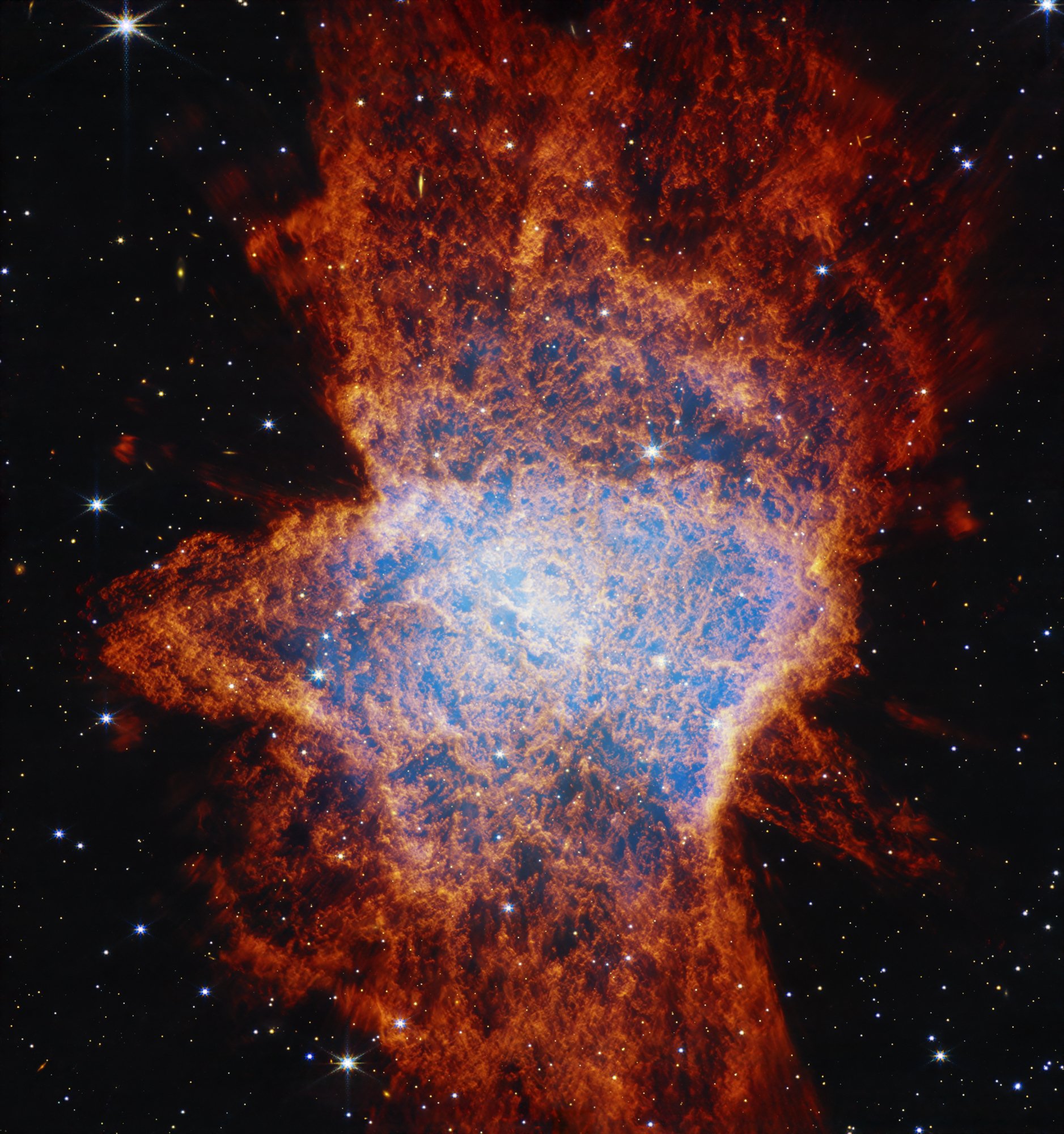The James Webb Space Telescope (JWST) has captured a series of high-resolution images of the NGC 6072 nebula, located approximately 3,060 light-years away in the southern constellation of Scorpius. These images reveal intricate details that could enhance our understanding of stellar evolution, particularly how low-mass stars transition into planetary nebulae.
As stars near the end of their life cycle, they expel clouds of gas that expand into planetary nebulae. Since their discovery in the late 1700s, astronomers have cataloged nebulae in various shapes, primarily circular and elliptical. NGC 6072, however, deviates from these typical patterns, presenting a more complex structure that has intrigued researchers.
Unique Features of NGC 6072
Initial observations from JWST’s Near-Infrared Camera (NIRCam) and Mid-Infrared Instrument (MIRI) depict NGC 6072 as a chaotic formation, likened to a splatter pattern. The NIRCam data highlights a hot central core, glowing in a bright blue hue, surrounded by elliptical outflows that create a multi-polar configuration. This arrangement has resulted in two lobes of gas and dust intersecting the core at near-vertical angles, while a third lobe extends perpendicularly, forming an equatorial plane.
The central region of NGC 6072 is marked by dark pockets of space encircled by orange material, which turns redder as it moves away from the core. This coloration suggests that the gas and dust cool as they disperse from the central heat source. Notably, the presence of a three-lobe structure may indicate the existence of at least two stars at the nebula’s center, likely including a younger companion to the aging star.
MIRI’s longer-wavelength infrared data further emphasizes the web-like pattern formed by the dust outflows. The images captured by MIRI also reveal a star at the nebula’s heart, appearing as a pinkish-white dot, alongside concentric rings expanding outward from the core. These rings may signify a secondary star orbiting the older star or could be the result of pulsations in the outflows, with gas and dust expelled at intervals over thousands of years.
Implications for Stellar Evolution
The combined data from NIRCam and MIRI illustrate both cool gas, likely molecular hydrogen, and hotter, ionized gas in distinct areas of the nebula. As the central star continues to cool, NGC 6072 will eventually dissipate into the interstellar medium (ISM), enriching it with heavier elements crucial for the formation of new stars and planetary systems.
Studying planetary nebulae like NGC 6072 is a key objective for the JWST, which aims to provide insights into the lifecycle of stars and their environmental impacts. These findings could also offer a glimpse into the future of our own Sun as it approaches the end of its main-sequence phase, which is projected to occur in billions of years.
The ongoing research facilitated by the JWST promises to deepen our understanding of the cosmos, transforming how we perceive the life cycles of stars and the intricate processes that govern their development.





































































